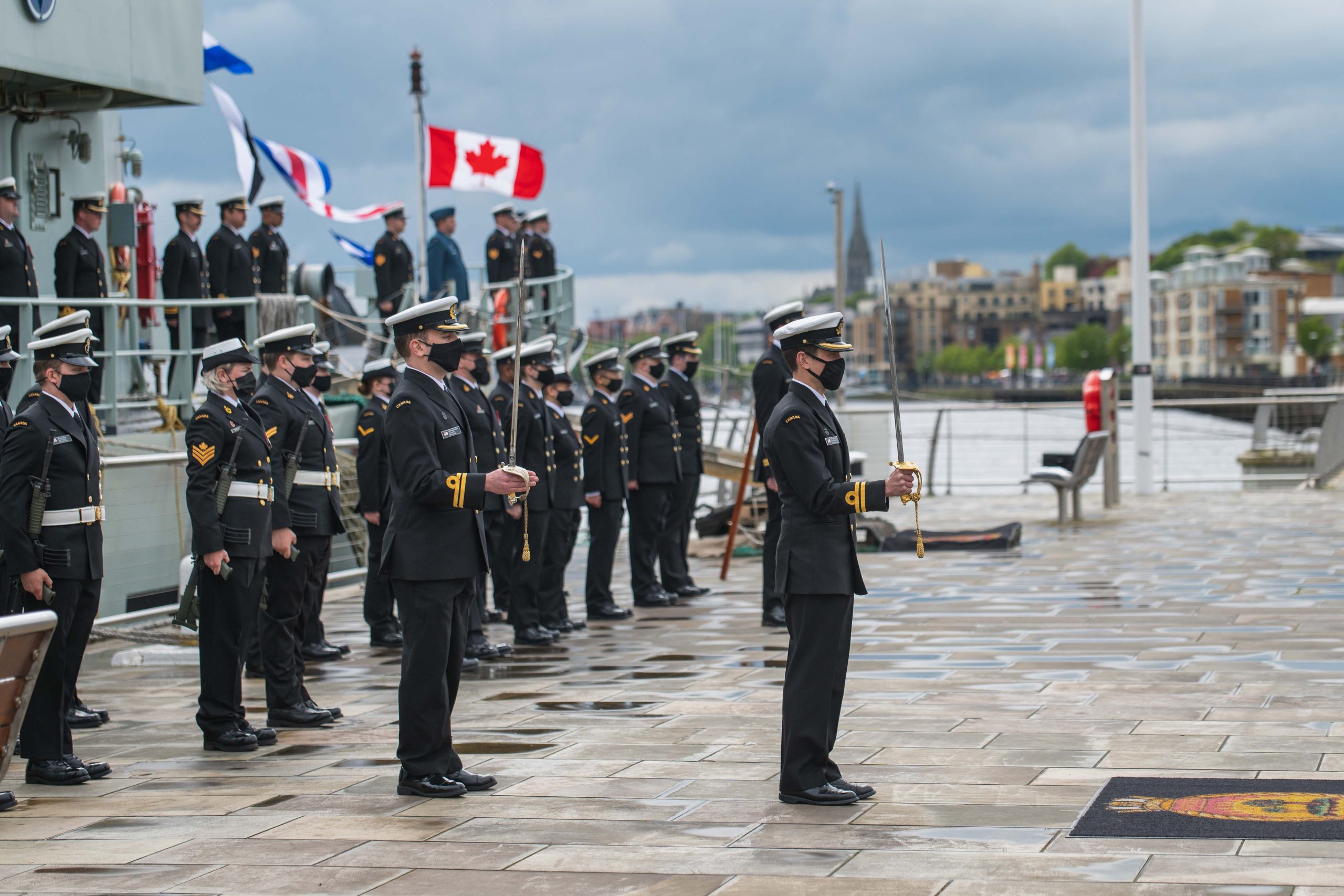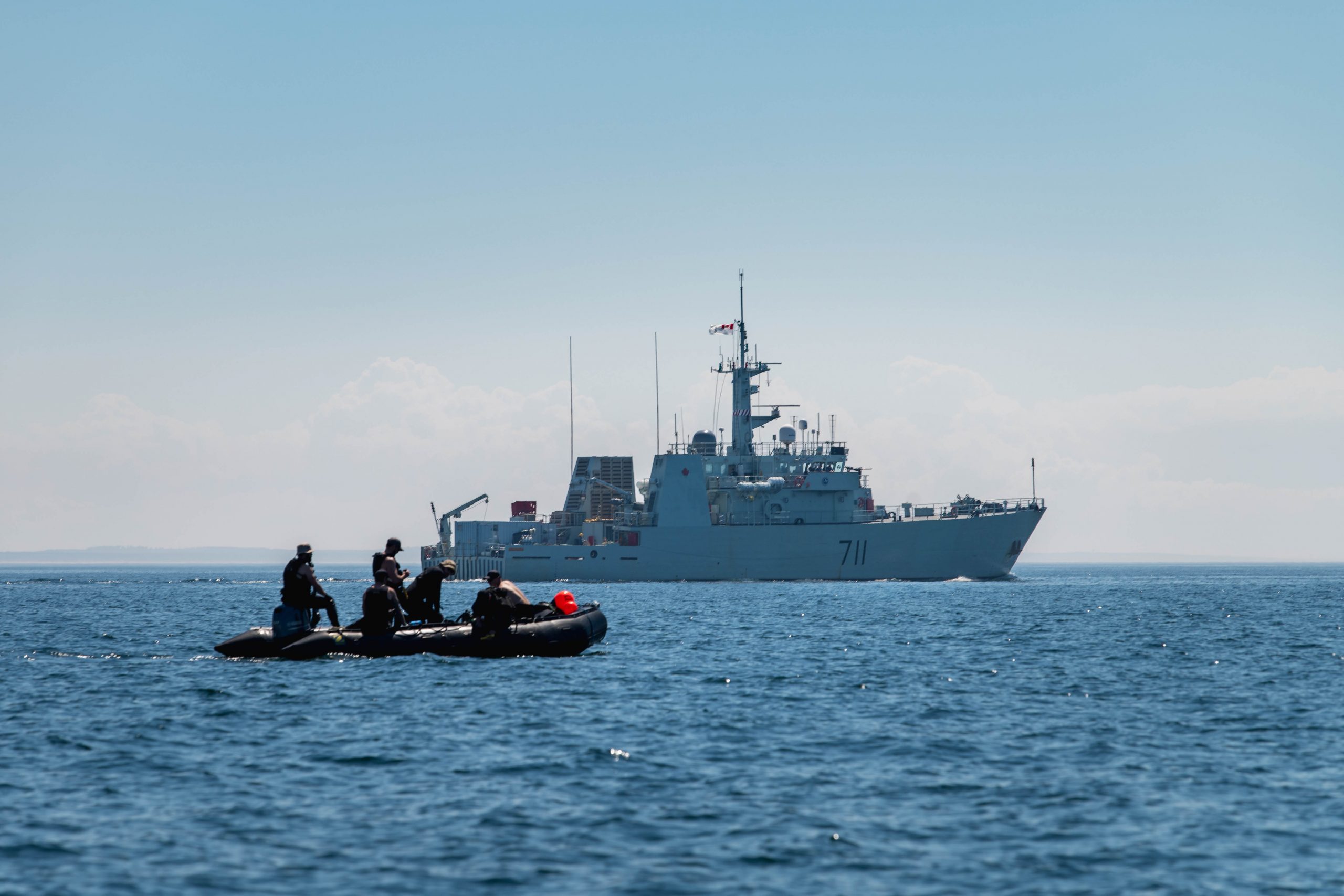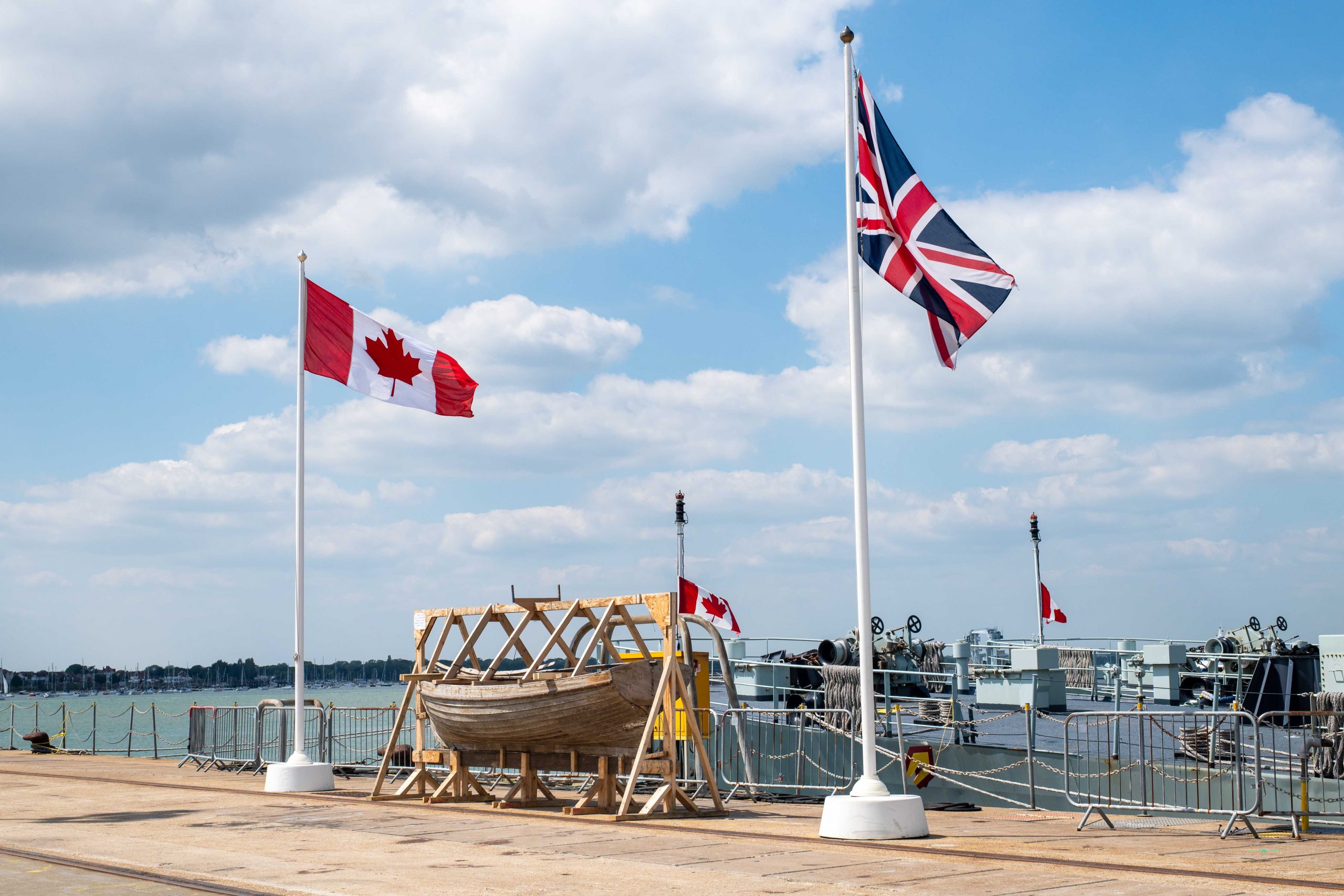
LT JEFFREY MCBRIDE
Of Waves, Whalers, and Mines: A voyage across northern Europe
By S2 Natassia Lei,
HMCS Summerside
The day HMCS Summerside and HMCS Kingston departed Halifax in early May was a day unlike any other. Excitement struck the ships’ companies as anticipation of our upcoming sail drew nearer. There was an air of calm busyness about the ships, punctuated by experienced professionalism. For some, this was their first sail, a chance to see Europe and gain their sea legs. For others, this would check another box in their sea-going career.
We left with several tasks. Foremost, the ships’ main goal was to participate in BALTOPS 2021, a NATO-led exercise with our oversea allies. We were to join a NATO task group conducting Naval Mine Warfare in the Baltic Sea. As a secondary purpose, we were also instructed to patriate an Admiralty’s Trawler Whaler from the United Kingdom back to Canada.
We set out with little fanfare for our mission in the Baltic Sea. It would be a 12-day transit from Halifax, Nova Scotia to Londonderry, Northern Ireland.

LT JEFFREY MCBRIDE
After a brief stop in St. John’s, Newfoundland to refuel, we began our trip across the roaring Atlantic Ocean. In the grand scheme of a life, 12 days is but a drop in the bucket, but with a storm to our stern and a storm to our bow, it was a wild dash in the hope of threading rough waters. How, then, could we not feel a sense of relief as the lush green shores of Northern Ireland emerged from the fog? I vividly recall standing out on the sweep deck as my senses were overwhelmed with smells and sights which I had not felt in days. Seagulls circled the ship, crying out in their mysterious avian tones. In the distance, I could make out the waves, crashing onto shorelines long-awaited. It was a land shrouded in a light morning fog, and smelled of fresh salty air and the promise of adventures.
How fortunate we were to be able to travel during these trying times. With travel restrictions still in place in many provinces and territories, it was a sobering reminder that the young sailors and soldiers of the Second World War also crossed the ocean when the world was in a state of emergency. They too would have departed from Halifax, boarding merchant vessels and warships bound for Europe. Likewise, St. John’s, Newfoundland was their last port of call on the western side of the Atlantic and Londonderry was their first on the east. It was fitting then, that our visit coincided with events marking the 76th anniversary of the Battle of the Atlantic. The crew attended a solemn ceremony, where a crowd of spectators had formed outside the gates. The highlight of the event was the striking of the bell. Eight times it rang in Halifax, eight times it rang in St. John’s, and eight times it rang in Londonderry. This symbolically marked the end of the watch for the fallen. Yet their memories still echo across time. From the Second World War to the present, and from the present into the future, theirs is the legacy we bear. With this dedication in mind and at heart, we departed Londonderry and proceeded to our next port: Portsmouth.
Originally a Roman port, Portsmouth lies on the south coast of England and is home to the UK’s largest naval base. Less than a few hours after pulling into port, what should appear off our port bow but HMS Queen Elizabeth, one of the UK’s largest and newest aircraft carriers. Sheltering in harbour until the seas subsided, she certainly improved the view out of our window! The following day brought another surprise. The news spread rapidly that Her Majesty Queen Elizabeth II herself would be visiting her aircraft carrier. The precise timing was unannounced but by a stroke of luck, I happened to be by the binoculars when her royal helicopter landed. Although our view was restricted, we managed to catch a quick glimpse of the Queen.
As we progressed to our main mission, we enjoyed a few other highlights along the way. Prior to Portsmouth, we had a short detour to the Giant’s Causeway, site of the legendary battle between the Irish giant Finn McCool and his Scottish counterpart, the giant Benandonner (Finn McCool won). After Portsmouth, we paused off the coast of Germany for some aquatic PT. The sea was salty, but the thrill of jumping in the cool waters temporarily appeased our weary souls.
By the time June rolled around, we were in Klaipeda, Lithuania for our mission – BALTOPS. Stretching all along the jetty were minesweepers and minehunters from NATO nations, including Germany, Lithuania, Norway, and Poland. Our mission was twofold. In the short term, it was to clear mined waters prior to the main amphibious landing. In the long run, we were to increase our interoperability with our NATO allies. After a grueling few weeks which challenged our naval capabilities in a variety of ways, we succeeded in clearing a path for the amphibious assault. To cap off the mission, we participated in a grand naval tradition called a steam past. The ships in our task group assembled into a line and, taking turns, the last ship would steam to the front. Rails were manned, fire hoses were made ready, and our crew was encouraged to display our national pride. I would like to report that as HMCS Summerside steamed from the back of the formation to the front, she ensured that every ship she passed was appropriately christened with a healthy dose of sea water.
Our mission accomplished, we began the voyage home. Yet, like the brave Odysseus of Greek mythology, we had a few more stops along the way. A few days were shaved off our transit by a venture through the German Kiel Canal. Entering through the Baltic Sea, we were met by brick-faced walls adorned with vibrant vines. The recreational paths along the shoreline were full of pedestrians and cyclists enjoying a mild spring day. After a trip through the locks, we emerged on the other side, bound once again for Portsmouth where we were tasked with a notable duty.

LT JEFFREY MCBRIDE
On May 24th, HMCS Summerside had the honour and privilege of patriating an Admiralty’s Trawler Whaler back to Canada. Coming alongside once again in Portsmouth, UK on June 22, we had our first look at the weathered wooden boat. Within her tired timbers lay a history which cannot be adequately expressed in words. At 16 feet long, 7 feet wide and approximately half a ton, her clinker hull bears witness to craftsmanship wrought with expert hands. She serves as a portal to the past. As the standard boat issued to the Flower-class corvettes (such as HMCS Sackville), she is the last of her kind. Seemingly innocuous at first glance, she is a reminder that a ship requires all her equipment in order to achieve her mission. The whaler’s contribution may have been small, but the corvettes on which she was attached were key in ensuring safe transit for Allied shipping during the Battle of the Atlantic. The Naval Museum at CFB Halifax has graciously accepted her; the final extant whaler in the same port as the final extant corvette. It is appropriate then that HMCS Summerside brings her back. Why? Walking through our ship, one can easily spot her battle honours. In yellow letters it boldly states: ATLANTIC 1941-1944 ATLANTIQUE. This shared heritage between our two countries is not only a reminder of the paths we have sailed together, but also of the ones we intend to take as we continue into the future.
In these difficult pandemic times, it is all the more important to take stock of our priorities in life. Having the opportunity to travel during these two months has afforded me time to reflect and gain a new perspective. What I have learned is that I am never alone. There may be times when there is nothing around save the deep blue sea and tempest-tossed waters. Nevertheless, a call for help only requires a press of the button, the raising of a flag, or the flashing of a light. Like the sea, our world may seem uncertain and overwhelming at times, but it does well to remember that we have friends, allies, and fellow mariners close by.
For a country bound by three oceans, the Arctic, the Pacific, and the Atlantic, crossing one of them is a Canadian rite of passage. From the earliest explorers to sight the shores of the Americas to the Canadian sailors onboard HMCS Summerside and HMCS Kingston, the ocean is a threshold between lands, cultures, and history. Sailing has afforded me the opportunity to not only see the world, but to see the humanity in each person I encounter. Fair winds and following seas.






